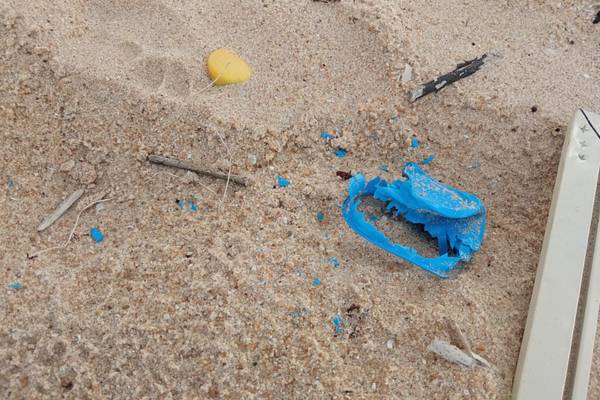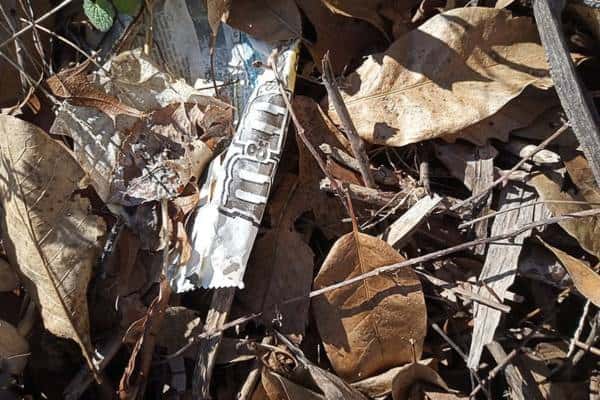This page may contain affiliate links. If you click and buy, we might get a small commission at no cost to you.
Plastic has become an integral part of our daily lives in our world nowadays, and people consider it as the most abundant type of debris found, accounting for as much as 92%. But this particular product irreversibly harmed the environment and is now found everywhere, scattered throughout the planet’s surface, from the deepest oceans to the highest peaks.
It’s also one of the factors driving the migration of other species, which may destabilize the balance of their new habitat. Since plastics are different from other waste materials, a lot of people are very curious about how long plastic takes to decompose.
This article will provide the answer to this question and offer some insights about the decomposition of plastics to help you gain a better understanding.
How long does plastic take to decompose?

The amount of time it takes for different types of plastic to decompose varies greatly. Certain plastics can decompose up to 1,000 years, while others might take as little as 20 years. Environmental conditions, as well as the type and size of the plastic, all play a role.
Key Takeaways:
- The specific type, environmental factors, and material size determine how long plastic decomposes, ranging from 20 to 1000 years.
- Sunlight naturally decomposes them through photodegradation.
- We can use incineration, landfills, and recycling to dispose of plastics.
Does plastic take 1,000 years to decompose?
The time required for plastic to decompose varies depending on the type of material and its size. This range can span from 20 to 500 years; in some cases, it may even take up to 1000 years. Due to their unique features that set them apart from organic things like paper and food leftovers, plastics have been a source of great debate and worry in the field of nature preservation.
Unlike these biodegradable substances, plastics don’t readily decompose, leading to many environmental challenges. When thrown away or disposed of properly, they can stay in the environment for hundreds of years or even longer. This longevity seriously risks ecosystems as plastic waste accumulates in various natural habitats, including oceans, forests, and even urban areas.
Why do plastics rot slowly?
Plastics decompose slowly primarily because of their chemical composition. Manufacturers make most plastics from polymers, which are long chains of molecules designed to be durable and resistant to degradation, making them ideal for various applications.
This plastic provides a reliable and durable solution for protecting and preserving products during transportation and storage, making it an ideal choice for ensuring that items remain intact and undamaged, whether it’s for food, electronics, or other consumer goods.
When it comes time to dispose of them, this longevity becomes a liability because natural processes like microbial activity and weathering have little effect on breaking these complex structures. As a result, plastic garbage builds up in the environment and has a variety of negative consequences.
Plastic disposal
Burying in landfill

People commonly use landfills to dispose of plastics and other garbage by burying these wastes under the soil. However, disposing of these things in landfills may not be the best way because landfills can become a significant source of microplastics.
Due to their small size, microplastics can easily spread over long distances in their surroundings. Plus, the limited availability of oxygen in landfills makes it hard for plastics to decompose, which causes them to remain in the environment for an average of more than twenty years.
Incineration
Another way to dispose of them is through incineration. Incineration involves burning waste materials, including plastics, and placing them in a combustion chamber to completely destroy them. The materials must first be excavated or pumped into containers, and any trash or extra water must be removed before performing this.
Since it also has a second chamber for gases that aren’t destroyed in the first one, it effectively destroys hazardous waste materials. However, burning plastics can produce a range of hazardous substances, most of which are released into the atmosphere. Some of them include harmful and toxic carbon- and oxygen-based free radicals, heavy metals, and greenhouse gases that may negatively impact the ecosystem.
Recycling
Recycling greatly avoids the negative impact that landfills and incineration can have, making it one of the most effective ways of disposing of them. You can recycle, reuse, and transform PET, PVC, HDPE, and LDPE, which are some of the most common types of plastics. Mechanical recycling and chemical recycling are the two recycling methods you can use.
Chemical recycling, also known as advanced recycling, involves breaking down plastics using chemicals to reuse them for a different purpose, such as turning them into gas for energy, whereas mechanical recycling, also known as traditional recycling, refers to the process of breaking down plastics through the use of mechanical processes to create new products.
What breaks down plastic?

As mentioned, these particular materials don’t easily decompose like other waste products because they’re made of a material that ensures their durability and stability as a product. To naturally degrade a plastic, it requires photodegradation or decomposing using sunlight.
As a result, the plastic becomes more fragile and breaks into even tinier fragments, eventually breaking down to its most basic molecular structure, where microorganisms can break it down. However, it can take up to hundreds of years for this process to occur, and given the current accumulation of plastics in our environment, containing plastics can take more time and effort.
Final Thoughts
In conclusion, plastic decomposition varies widely depending on type, environmental conditions, and size. Plastic pollution gravely threatens our planet, as some plastics persist for centuries. Addressing this issue demands collective action, from individuals reducing consumption to governments implementing policies.
Sources:
- “A Citizen’s Guide to Incineration”, United States Environmental Protection Agency, September 2012, epa.gov
- “Plastic Degradation and Its Environmental Implications with Special Reference to Poly(ethylene terephthalate)”, H. K. Webb, J. Arnott, R. J. Crawford, E. P. Ivanova, Polymers, 2013, doi.org
- “Plastic Waste Degradation in Landfill Conditions: The Problem with Microplastics, and Their Direct and Indirect Environmental Effects”, I. Wojnowska-Baryła, K. Bernat, M. Zaborowska, Int J Environ Res Public Health, October 14, 2022, ncbi.nlm.nih.gov



